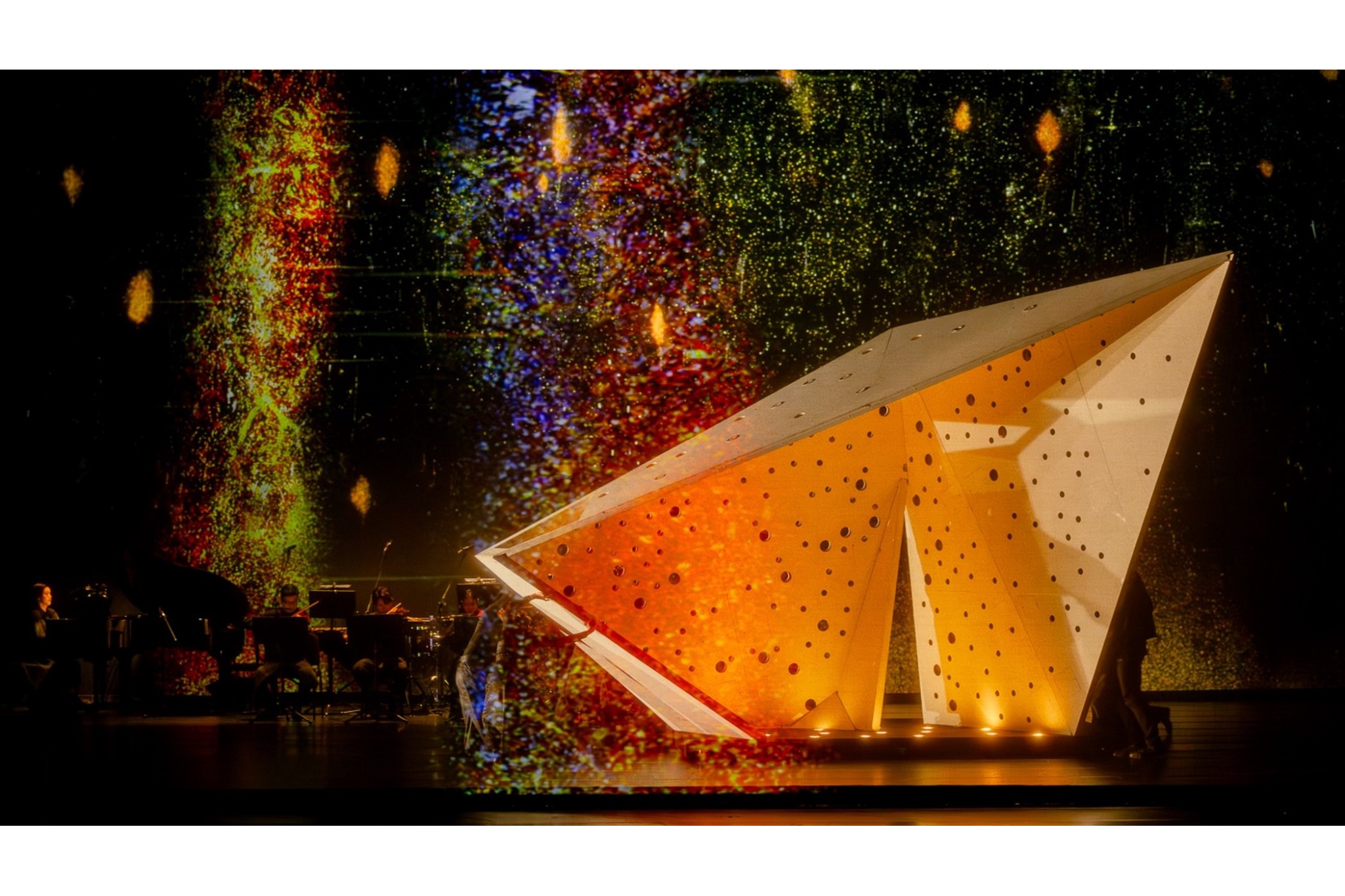
"Pursuing the light ahead-into Paul Chiang" draws inspiration from renowned artist Paul Chiang’s iconic works -"Notre Dame de Paris", "For Hundred Year Temple", "Pisilian" and "Silver Lake" , blending sound, visuals, music, and dance to convey his deep interpretation of light. This journey invites reflection on nature, life’s essence and a pursuit of humanistic care. The project draws inspiration from the sculptural works of artist Paul Chiang. Breaking away from traditional static stage design, this setup allows for the disassembly and reassembly of stage elements, transforming them into projection surfaces for a multi-layered, dynamic space. Performers, dancers, and musicians can move freely within, flowing like musical notes. This design captures the interplay of space and time, as if each moment occurs within a shared reality of "music and visuals." The result is an immersive spatial experience showcasing extraordinary light and shadow effects. The project embodies Paul Chiang's vision: "All my works attempt to extend outward," bringing to life his multi-layered spatial dynamism and sense of boundless continuity. At the end, an emptiness, silence. the stage evokes a vast, pure landscape, embodying Chiang’s philosophy: art is a form of purification, a reflection of nature, emptiness, and a sanctuary for the soul.
"Pursuing the light ahead-into Paul Chiang"inspiration from the sculptural works of artist Paul Chiang. The three main components of the stage—crafted with materials of varying transparency—add layered depth and dynamically interact with the dancers. In “Notre Dame de Paris” scene, a semi-transparent triangular prism represents unknown energy, suspended in space to symbolize a spiritual quest between the divine and the human. For “Hundred Year Temple”, a perforated folding plate casts light to evoke candlelight, resonating with hope in Chiang’s works. “Pisilian” means "the place of shepherding" in the language of Taiwan's Indigenous peoples. It contrasts solid and void, illustrating Chiang’s shift from confined spaces to the vastness of nature, embodying weight and lightness. The reimagined “Holy of Holies” utilizes projection to alter the sculpture’s form, blurring boundaries. This continuous transformation symbolizes a spiritual journey where all souls gather, seeking purification and ultimately returning to their essence in peace and stillness. “Silver Lake” exudes a serene, leisurely atmosphere, with imagery of nebulae, atmosphere, ocean, and space gently guiding viewers into an inner spiritual world. At the end, an emptiness, silence. The stage evokes a vast, pure landscape, embodying Chiang’s philosophy: art is a form of purification, a reflection of nature, emptiness, and a sanctuary for the soul.
Collaboration Team
Neo-Classical Chamber Ensemble
Chao Chien-Ming Architects & Planners
Producer
Chen Hsin-I
Director
Hsieh Chieh-hua
Stage Design
Chao Chien-Ming
Performing Ensemble
Neo-Classical Chamber Ensemble